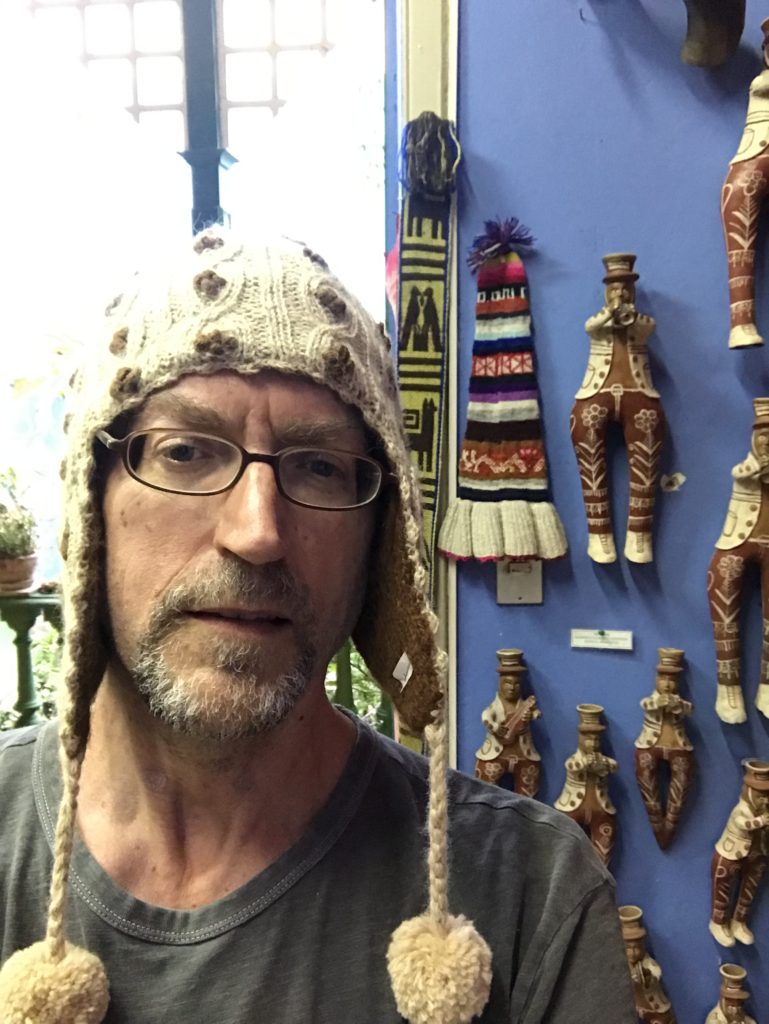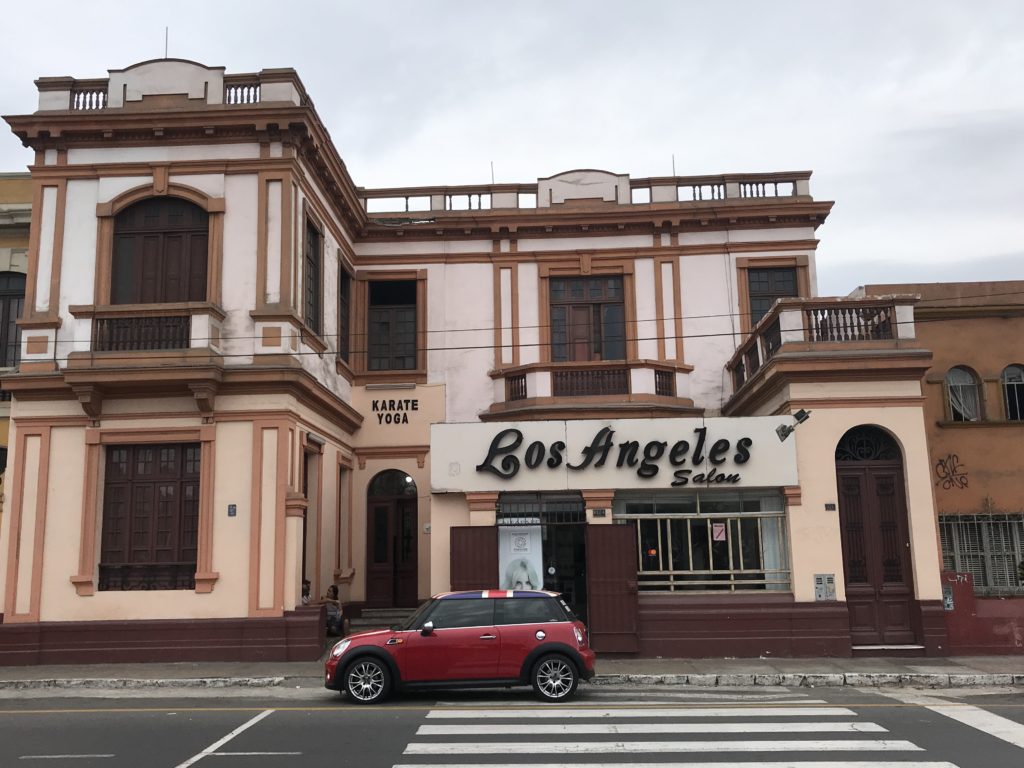
Amy and I have been in the Miraflores district of Lima, Peru for four weeks now and we leave for Bogota tomorrow. We’ve had amazing food in Miraflores and it is very nice and fascinating. We are staying in modern, high-rise apartments in the western section of Miraflores that overlooks cliffs that fall three hundred feet to the ocean. The apartment is very conveniently located, relatively quiet and we have gotten a lot of work done here. I finished the fourth revision of my new novel Beyond the Cliffs of Death and have sent it to the printer.
Besides a lost week of traveler’s diarrhea (TD), we have seen some amazing museums and a promenade overlooking the ocean. I have never seen a more beautiful promenade than the one that goes along the cliffs one block away from our complex. The promenade is well used and so nice that there isn’t much exciting to write about. Talking about nice people walking their dogs, people working out or bicyclists almost running us down is rather pedestrian. I hoped something more exciting might happen and yesterday it finally did.
The district next to Miraflores is Barranco and is famous for its Spanish-colonial architecture. I had to look up the meaning of Spanish Colonial architecture is described as: marked by the contrast between the simple, solid construction demanded by the new environment and the Baroque ornamentation exported from Spain.
I had to look up baroque and I think this description from Wikipedia is appropriate: The Baroque style used contrast, movement, exuberant detail, deep colour, grandeur and surprise to achieve a sense of awe. The Barranco neighborhood was built as a resort area near the beach in the early 1900s and was designed to awe. Walking around Barranco made me feel like I was walking by presidential palaces and princely estates. The neighborhood has a Colonial feel to it that is hard to place. The exciting thing about it is that many of the homes have been abandoned so that they are in a state of disrepair and have a lot of character.
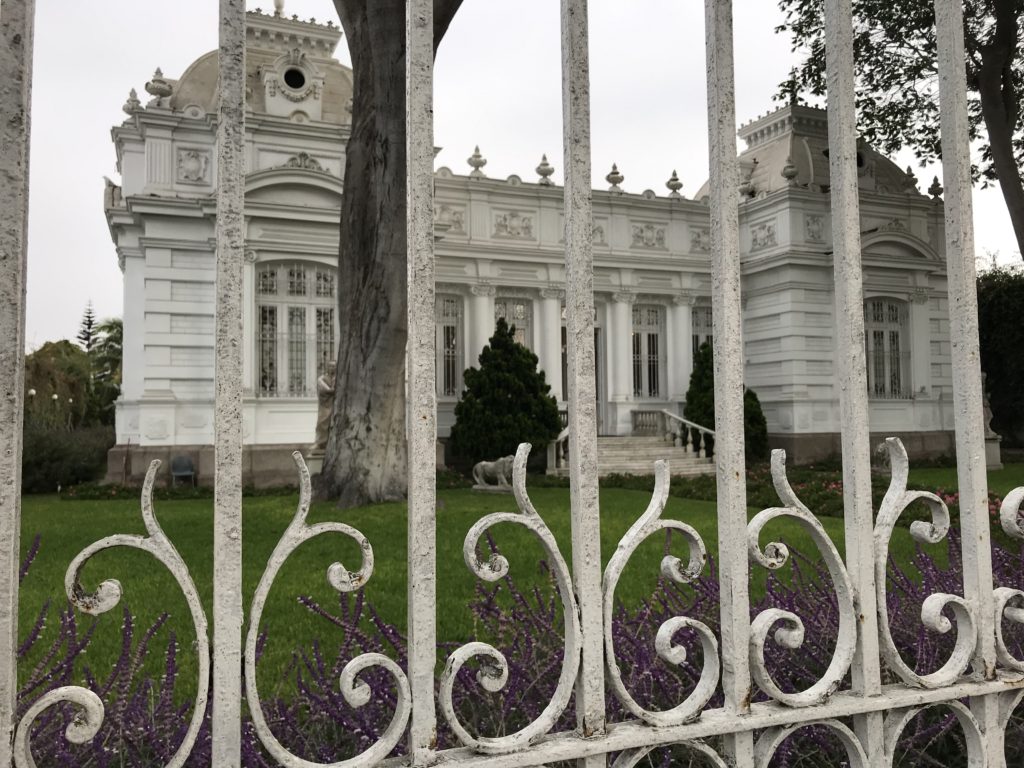
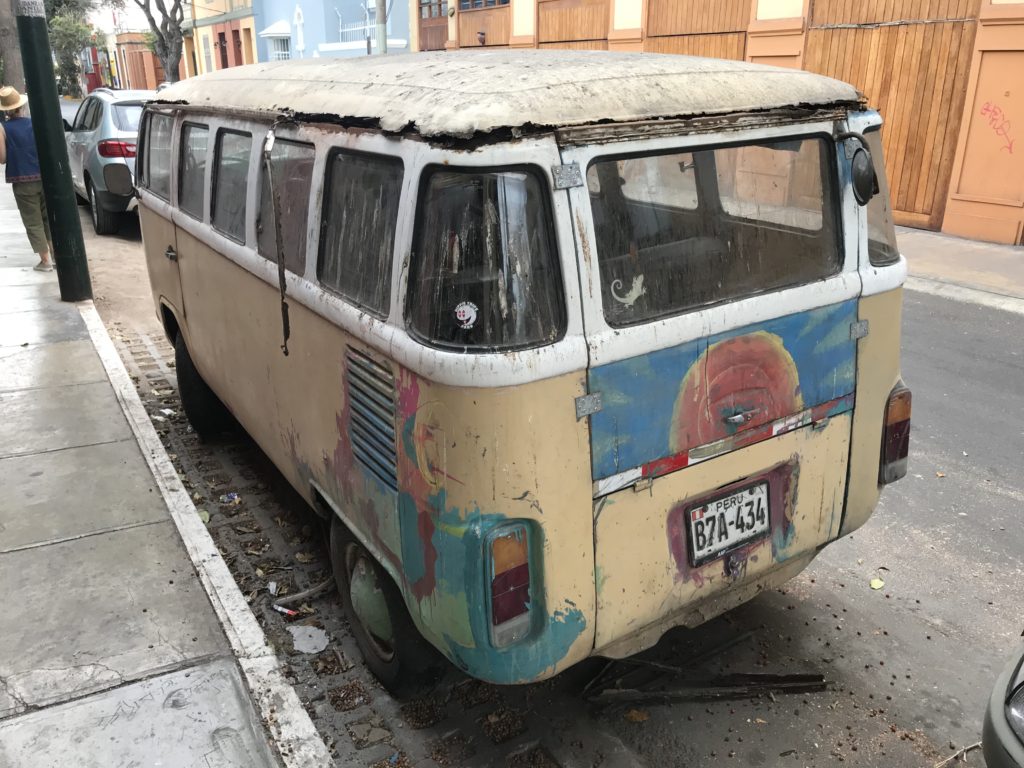
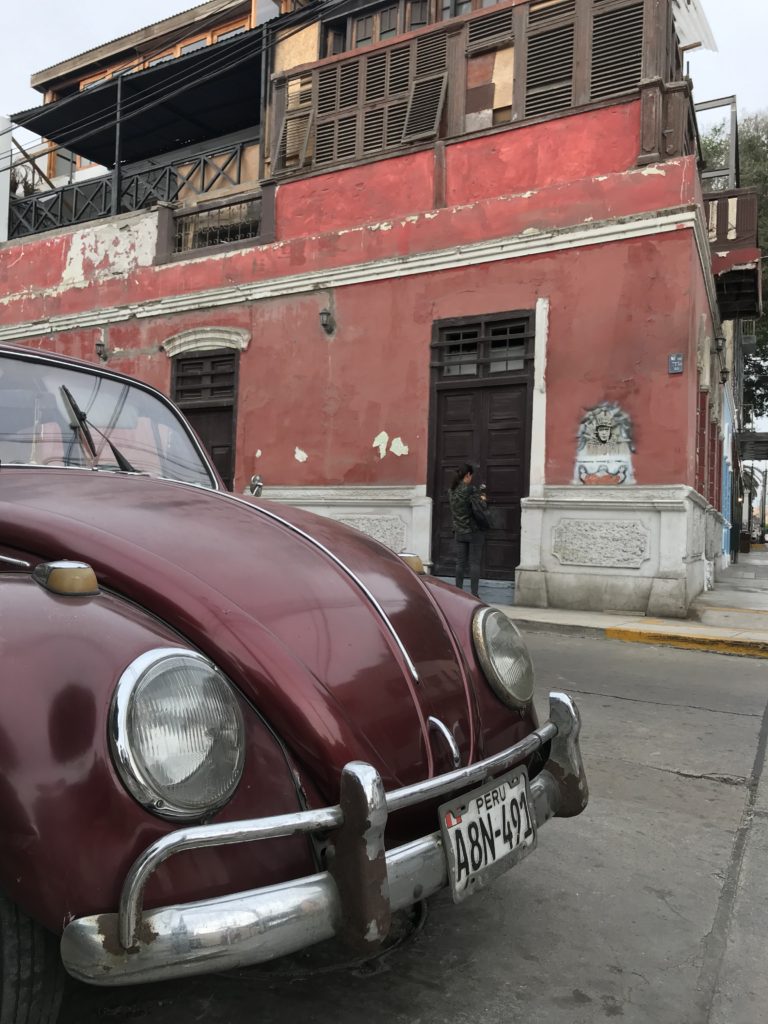
Walking by new high-rise after new high-rise in our neighborhood doesn’t inspire me to write much. Walking by a run down and graffiti-covered mansion, known as a casona here, gets my mind dreaming of what was and what could be. In Miraflores, I’m not bored by the white, gray, black and tan apartment complexes with their staged entrances, but they are so similar to what I can see in many cities in the US. Do you want to hear about how they are almost the same as in the US?
Even if you do, I’m not going to write much more about it.
In Barranco, I see a skateboarder riding by worn down casonas and I have to take pictures like this. I’m compelled to tell their story – or at least make one up.
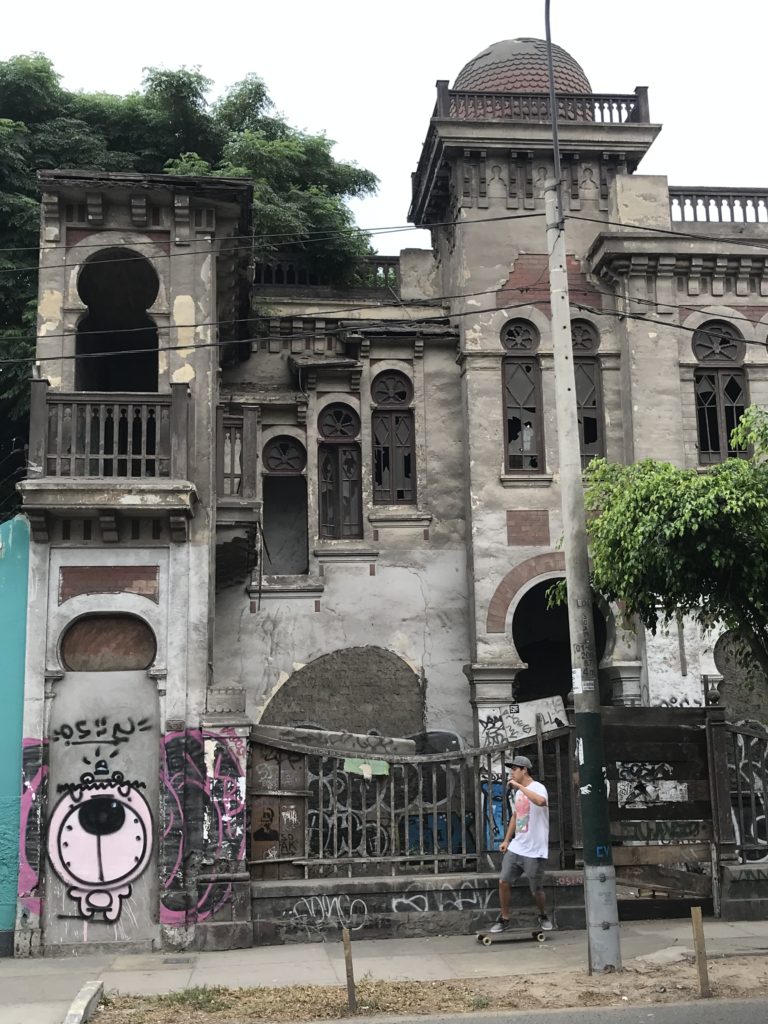
I’m not complaining about staying in a nice apartment where I have a door man and food delivery, but Barranco is romantic and bohemian. Many of the casonas have been converted into museums, restaurants, bars, boutique hotels and quaint shops. I love their high ceilings, covered windows and elaborate constructions. We can walk in many of them and have a drink or coffee and it is very open. It doesn’t ever rain here and it has been in the 80s every day and 70s at night. The apartments here don’t need AC, heating or much of a roof except to keep the birds out.
The casona I want to talk about is a little boutique called Artesanias Las Pallas. Amy found the shop from here extensive research. We walked down a quiet Barranco side street past many nice homes to a shop that looked like any other house on the block. I looked through the green, wrought-iron gate and saw a gray-haired woman sitting inside on the couch. I asked if they were open and she buzzed me in. Amy was a ways behind me taking photos as usual.
The woman told me how she keeps the gate locked, so people can’t just wander in and out. That way, she doesn’t need a security guard. She spoke the Queen’s English and told me she had been living in Peru for 33 years. Her name was Mari and she grew up in Wales. She had met a Peruvian man in Switzerland when she was studying to be a translator. They got married, moved to Peru and had a couple children before he passed. She stayed in Peru and now has grandchildren roaming in and out of the house. She was a rather tall Welsh woman and stood upright with great posture. I expected her to offer me high tea with her accent, but the offer never came.
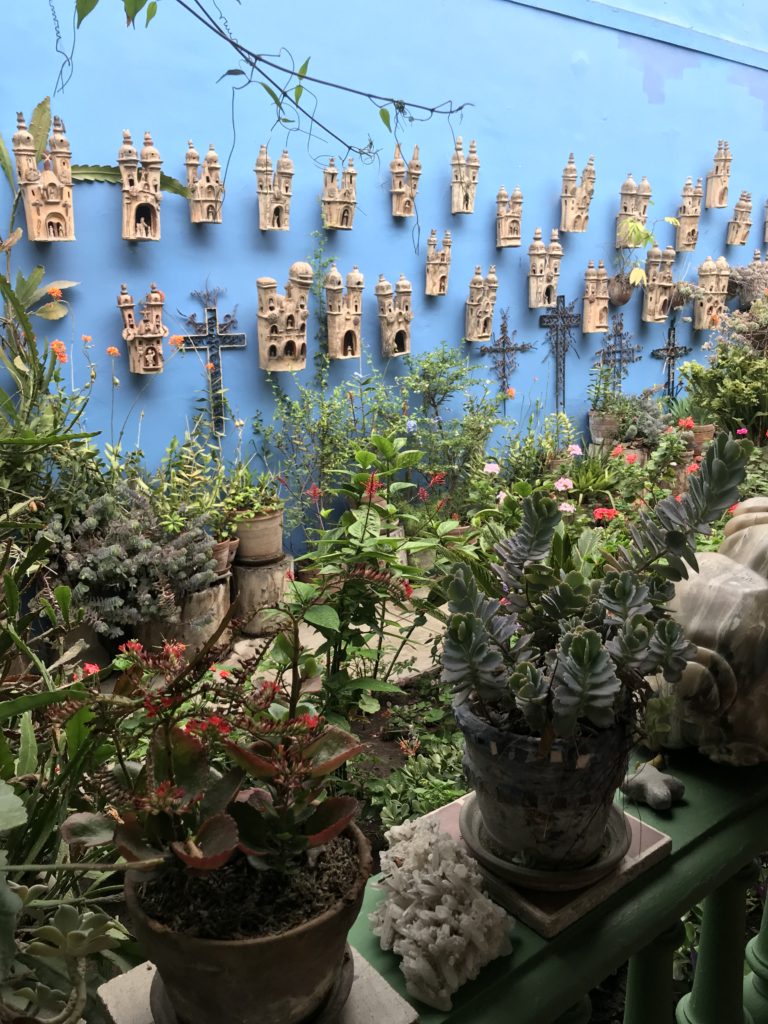
Mari had many of the regular Peruvian souvenirs like portable dioramas, alpaca wool hats, braided bracelets and tapestries – and we would eventually bought many of these items. Mari had very high quality products and told us how she worked with the artist to improve their quality. She said many Peruvian souvenirs are made in China now, but hers were from Peru.
When she saw our keen interest, she took us out of the shop and into her home to show us her private collections. Her collections of relics were packed on to shelves and in cabinets all around her high-ceilinged home. She opened the green cabinet shown below and turned on lights on each shelf to show her collection off well. We’ve been to some fine museums in Lima and her collections were at the same amazing level. She was glad to show us things that she said had collected over the decades. She said you can’t find many of her things anywhere else.
Here are a few pictures of things around her home.
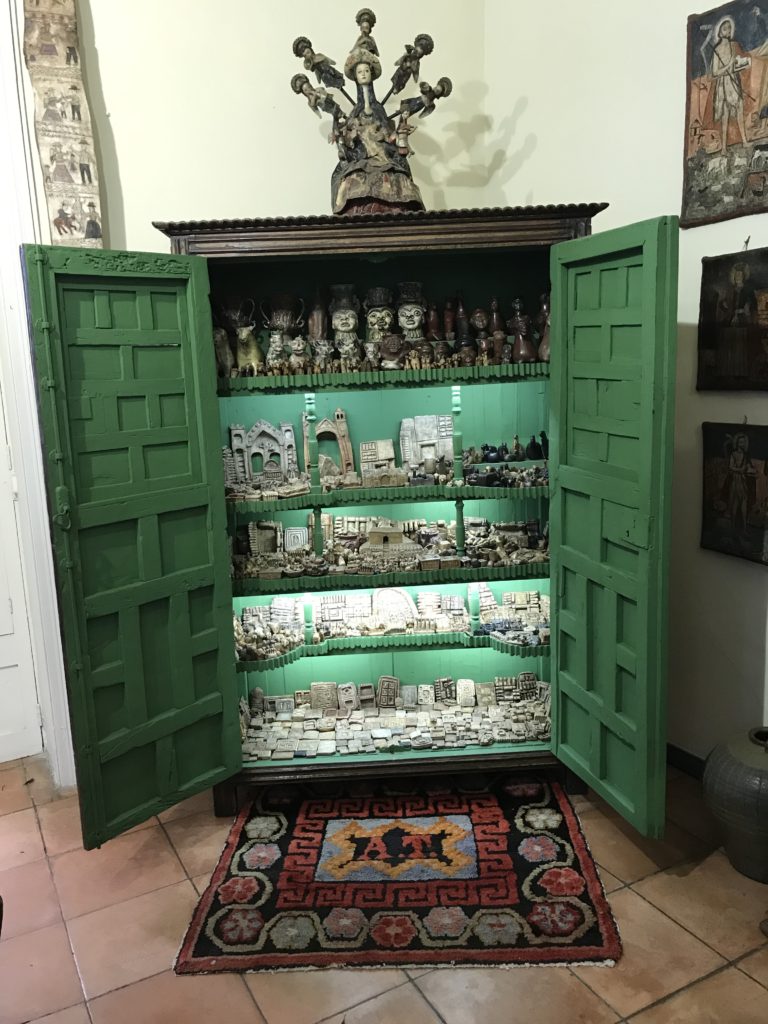
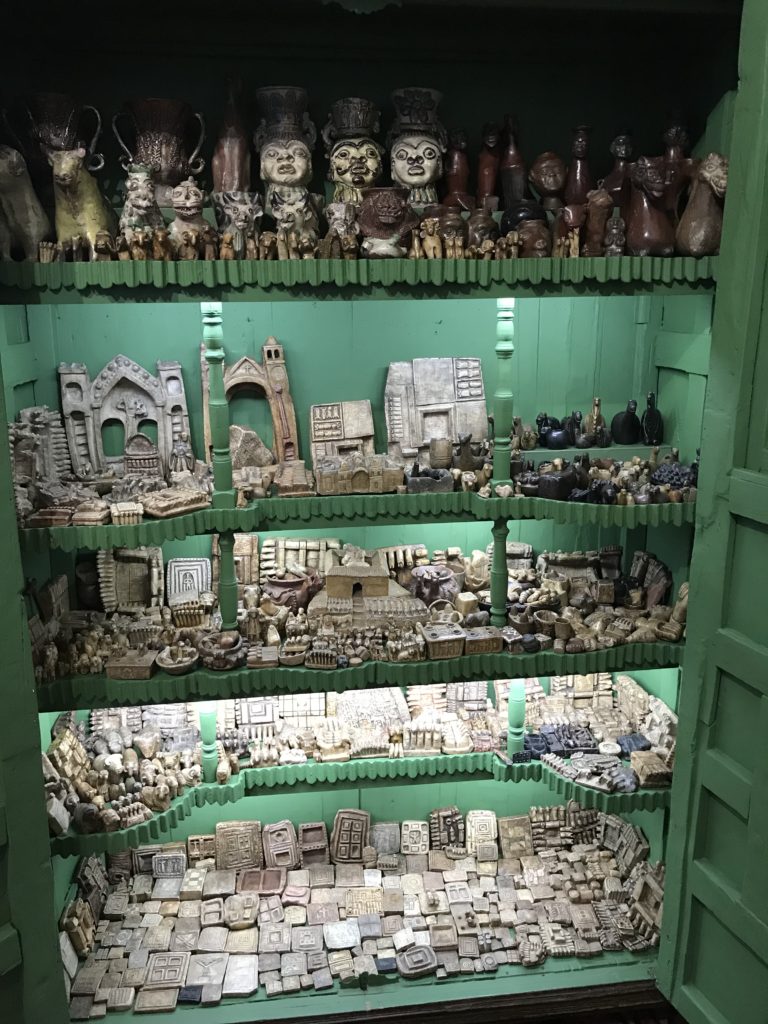
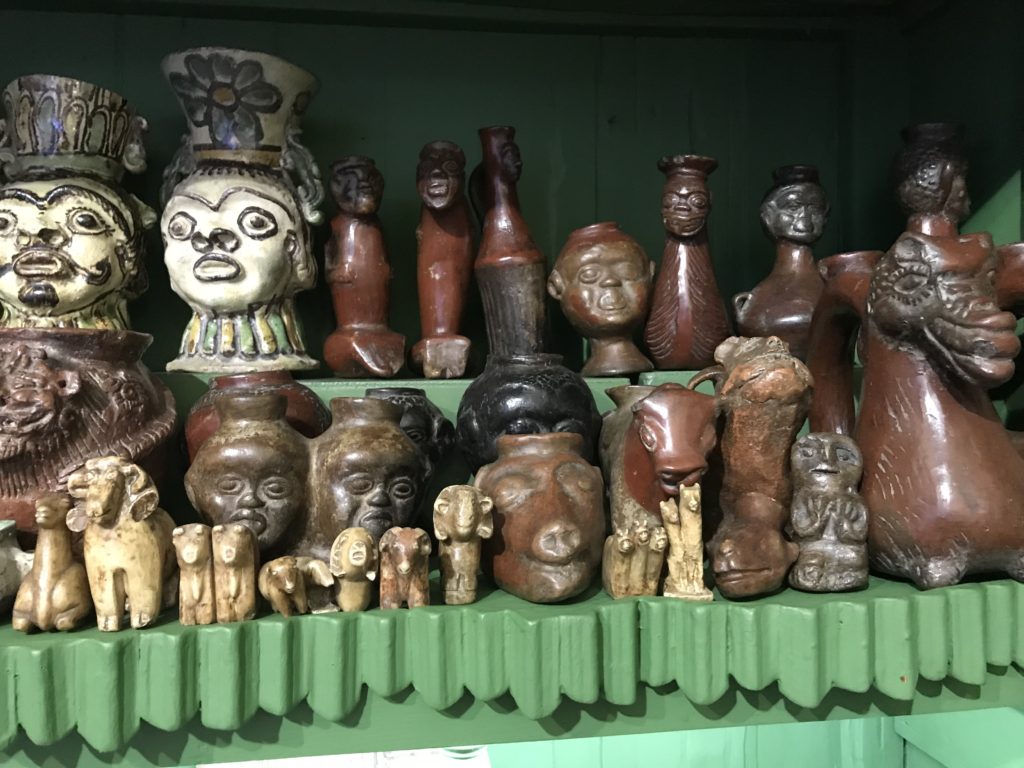
She told us the significance of many of the items and how shamans carved soft stones into healing stones that they gave to their patients. She showed us African influences on some of the pottery from the imported slaves. She showed us how Spanish and Moorish glazes were used on some pottery. Amy and I got a private tour of museum-quality artifacts with the curator and collector herself. By going to Mari’s shop, we finally got to see inside a casona and how the other half lives.
If you’re ever in Lima, go to Barranco and to Artesanias Las Pallas.
